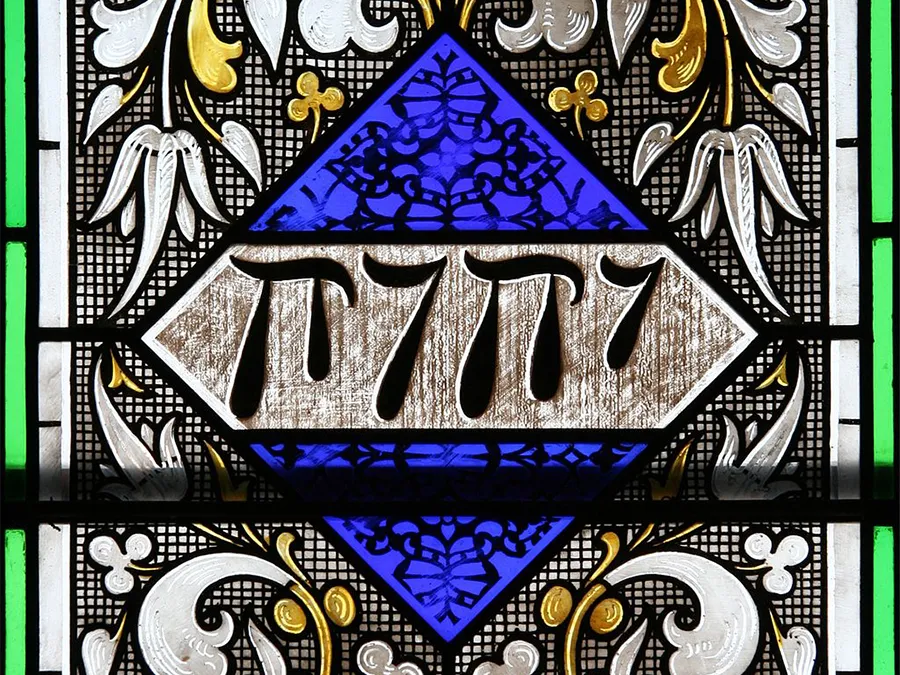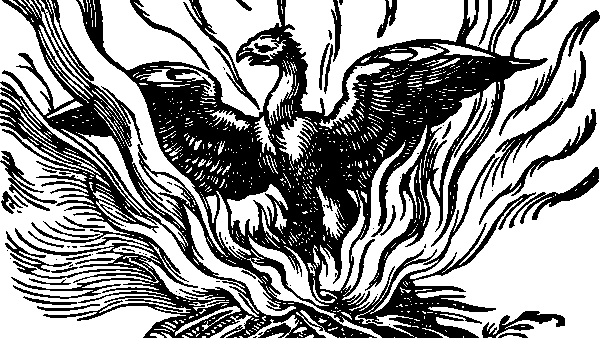In this short story by Jorge Luis Borges, a detective tale becomes a labyrinth in which the usual crime fiction tropes are subverted.
This short story by Jorge Luis Borges starts with a murder and a cryptic message left in a typewriter near the body: “The first letter of the Name has been written.”
Two more murders follow in different parts of the city, with accompanying notes saying that the second and then the last letter of the Name has been written.
Since this is Borges, though, “Death and the Compass” is not a simple police procedural. It’s more of a puzzle that depends for its solution on an understanding of Jewish theology and geometry.
At first, it seems as if the police detective, Erik Lönnrot, has successfully solved the puzzle—whereas most people believe the sequence of murders to have ended after the third one, Lönnrot realises that there will be one more because they are spelling the Tetragrammaton, the Name of God, which has four letters: YHVH. And he knows the location because the first three have formed a perfect equilateral triangle on the map. The fourth must be at the point where the triangle is extended to form a rhombus.
The truth, however, is more complicated. As Lönnrot reaches the fourth location at the appointed time and wanders around the abandoned Villa Triste-le-Roy, Borges builds a sense that he is entering a labyrinth. He is met by an “impregnable gate”, a stand of eucalyptus trees with “confused
generations of stiff red leaves”, a villa that “abounded in pointless symmetries
and obsessive repetitions”, a two-faced Hermes statue. He goes down into a cellar to climb up through a trapdoor, explores dining-rooms and galleries that keep leading him back to the same courtyard.
Finally he emerges on the belvedere and we discover that the whole sequence of crimes is a trap that Lönnrot was meant to solve so that he could be led to an isolated location where he will be the fourth victim. The killer takes advantage of Lönnrot’s reasoning to weave a labyrinth to trap him:
“That sentence revealed that this was a series of three crimes. At least that was how the man in the street interpreted it—but I had repeatedly dropped clues so that you, the reasoning Erik Lönnrot, would realize that there were actually four.”
Even at the moment of his death, Lönnrot is still calm and reasoning, arguing that the labyrinth contains three lines too many:
“I know of a Greek labyrinth that is but one straight line. So many philosophers have been lost upon that line that a mere detective might be pardoned if he became lost as well. When you hunt me down in another avatar of our lives, Scharlach, I suggest that you fake (or commit) one crime at A, a second crime at B, eight kilometers from A, then a third crime at C, four kilometers from A and B and halfway between them. Then wait for me at D, two kilometers from A and C, once again halfway between them. Kill me at D, as you are about to kill me at Triste-le-Roy.”
The themes of mirrors and labyrinths are frequent features of Borges fictions, as are the references to esoteric literature. And the concept of a crime story that revolves around a more complex puzzle reminds me of other fictions like “The Garden of Forking Paths“.
What’s unique about “Death and the Compass”, though, is the way it seems to play with the tropes of detective fiction. Usually, in these stories, reason triumphs as the detective spots the pattern that has eluded everyone else and catches the killer. But in the Borges version of a detective story, reason is the detective’s Achilles heel. And the killer, although clever, did not proceed according to a predetermined, reasoned plan—he improvised and adapted to events as they unfolded.
The meaning of a Borges story rarely comes down to one thing, and it would be too simplistic to conclude that Borges is saying instinct trumps reason. It’s an interesting way of making us think about the role and the limits of pure reason, however, particularly from a writer whose own work often shows its power.
This post is part of my Borges marathon, a slow, steady march through all 100+ works of fiction that Jorge Luis Borges wrote. Join me either by commenting or by writing your own review of any of the fictions. Next up is “The Secret Miracle”.




There are 8 comments
This one sounds like a fun one. Instinct and reason both have their limits. Perhaps we are to consider how we can combine them?
Yes, I think so. Borges stories are generally great examples of the power of reason, but he also likes to overturn things and look at them from another angle, so I liked this example of reason losing out to instinct.
In my own life, I often find that a combination of reason and instinct leads to the best results. When I go against my gut and talk myself into a decision that seems rational but doesn’t feel right, the results are rarely good. But then just acting purely on instinct without thinking through the consequences is often worse!
I remember this one as being a particular standout, though as puzzling as any Borges story can be. I do love the fact that he plays with those detective tropes, though.
Yes, Borges playing with traditional genre fiction and making something new is wonderful to watch! I enjoyed this one immensely, and another of my favourites is “The Garden of Forking Paths”, a very different take on a wartime spy thriller!
It’s so wonderful you are doing this thorough reading of Borges short stories. You are the reason why I bought them not long ago, and I will read them! I even separated them with post its, etc. It really is my intention to read them. There’s zero doubt they’re all such jewels, full of philosophy, challenging the literary norms, redefining and reinventing the short story genre.
That’s wonderful to hear, Silvia! I’m sure you’ll find the right time to read them, and I hope you enjoy them as much as I have. I look forward to reading your thoughts if you post about them on your blog.
I wonder if the preoccupation with the detective figure is partly in response to a legacy of Disappearances, to the need to go searching for answers because the powers-that-be do not have a stake in sharing information only in obscuring it. I’ve been reading some short stories by the Uruguayan writer Cristina Peri Rossi and I feel as though there are layers to her stories, too, which I’m barely glimpsing. Like truths in a mirror, revealed only at an angle.
Interesting point! I don’t think it can be directly in response to it because the story was published before the Disappearances began, but it is interesting to reflect on it in light of what happened in Argentina later on. And your more general point, about “the need to go searching for answers because the powers-that-be do not have a stake in sharing information only in obscuring it”, was probably very relevant in Borges’s time too! I don’t know Cristina Peri Rossi, but I love stories with layers to unfold so will have a look.